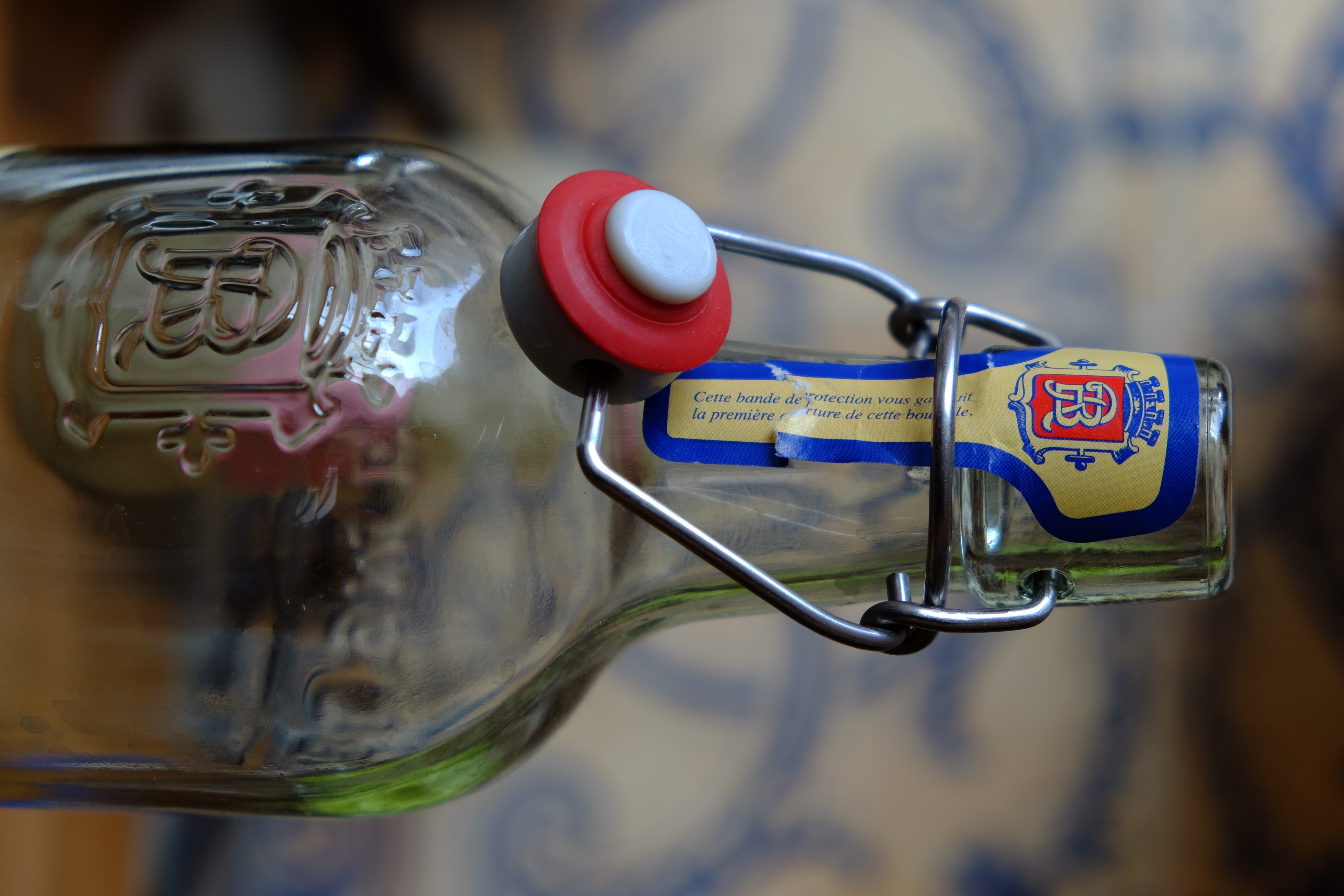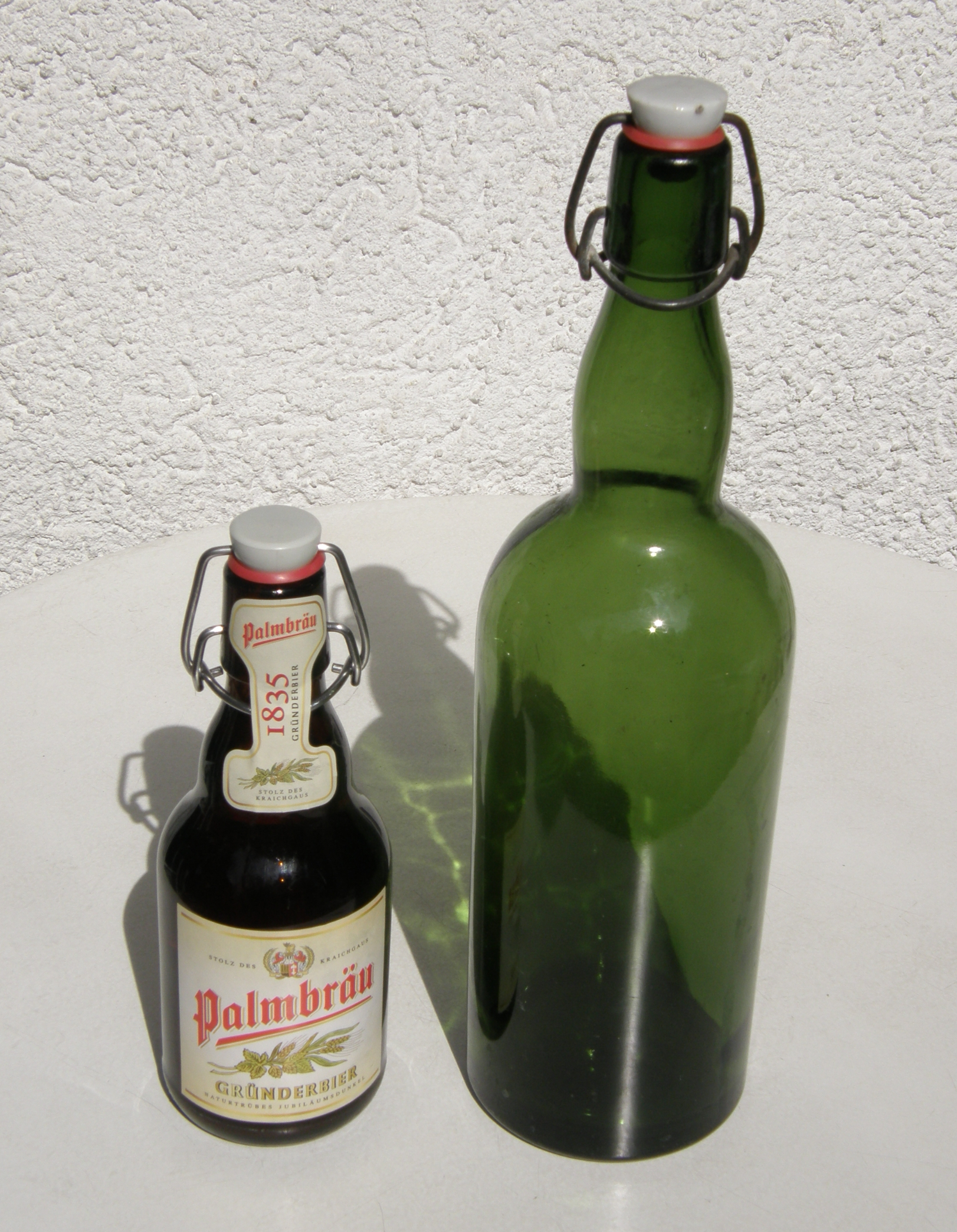flip-top on:
[Wikipedia]
[Google]
[Amazon]

 A flip-top, swing-top, lightning toggle, or Quillfeldt stopper (after the inventor, Charles de Quillfeldt) is a type of closure frequently used for bottles containing carbonated beverages, such as beer or mineral water. The mouth of the bottle is sealed by a stopper, usually made of porcelain or plastic, fitted with a rubber
A flip-top, swing-top, lightning toggle, or Quillfeldt stopper (after the inventor, Charles de Quillfeldt) is a type of closure frequently used for bottles containing carbonated beverages, such as beer or mineral water. The mouth of the bottle is sealed by a stopper, usually made of porcelain or plastic, fitted with a rubber
 A precursor to the flip-top, the "bail" or "Kilner" closure was invented in 1859, where a lid with gasket was held by a wire harness and sealed by a separate set of wires.
A precursor to the flip-top, the "bail" or "Kilner" closure was invented in 1859, where a lid with gasket was held by a wire harness and sealed by a separate set of wires.
 The first flip-top closure was created by Charles de Quillfeldt in the United States, who filed for a patent on 30 November 1874. The rights were purchased by Henry W. Putnam who adapted the design for use on fruit jars. He received a patent 25 April 1882, called "Trademark Lightning" and the jars became known as the lightning jars.
Several other varieties have been developed.
Many homebrewers prefer flip-top bottles, since they are easy to close after filling, and negate the need of a separate capping device.
The first flip-top closure was created by Charles de Quillfeldt in the United States, who filed for a patent on 30 November 1874. The rights were purchased by Henry W. Putnam who adapted the design for use on fruit jars. He received a patent 25 April 1882, called "Trademark Lightning" and the jars became known as the lightning jars.
Several other varieties have been developed.
Many homebrewers prefer flip-top bottles, since they are easy to close after filling, and negate the need of a separate capping device.
File:French kilner.jpg, Preserving jar with bail closure, opened and closed
File:BierflaschenVerschliessBügel.jpg, Flip-top seal used for crown cork bottles
File:Wuppertaler Brauhaus 0001.jpg, Flip-top beer bottles
File:KraeuterBuegelFlascheSophie.JPG, Mini bottle of herbal liqueur
File:Red Wing Pottery 967HH 1.jpg, Pottery jug with bail closure
File:Metal Eis Weissbier Bügelflaschen.jpg, Aluminum flip-top bottle
File:Bernauer-dunkel.jpg, Large beer bottle with flip-top
File:Grolsch premium lager bottle unopened.jpg, Unopened
 A flip-top, swing-top, lightning toggle, or Quillfeldt stopper (after the inventor, Charles de Quillfeldt) is a type of closure frequently used for bottles containing carbonated beverages, such as beer or mineral water. The mouth of the bottle is sealed by a stopper, usually made of porcelain or plastic, fitted with a rubber
A flip-top, swing-top, lightning toggle, or Quillfeldt stopper (after the inventor, Charles de Quillfeldt) is a type of closure frequently used for bottles containing carbonated beverages, such as beer or mineral water. The mouth of the bottle is sealed by a stopper, usually made of porcelain or plastic, fitted with a rubber gasket
Some seals and gaskets
A gasket is a mechanical seal which fills the space between two or more mating surfaces, generally to prevent leakage from or into the joined objects while under compression. It is a deformable material that is used to ...
and held in place by a set of wires. The bottle can be opened and resealed repeatedly and without the use of a bottle opener
A bottle opener is a device that enables the removal of metal bottle caps from glass bottles. More generally, it might be thought to include corkscrews used to remove cork or plastic stoppers from wine bottles.
A metal bottle cap is affixed ...
, with the wires acting in the same way as a latch clamp. The flip-top was the dominant method of sealing beer and mineral water bottles prior to the invention of the crown cork.
This is sometimes called a bail closure.
History
Prior to the creation of the flip-top bottle, bottles were often made from blown glass and sealed with acork
Cork or CORK may refer to:
Materials
* Cork (material), an impermeable buoyant plant product
** Cork (plug), a cylindrical or conical object used to seal a container
***Wine cork
Places Ireland
* Cork (city)
** Metropolitan Cork, also known as G ...
, which was difficult to open by hand and often unreliable, particularly for carbonated beverages such as mineral water or beer.
 A precursor to the flip-top, the "bail" or "Kilner" closure was invented in 1859, where a lid with gasket was held by a wire harness and sealed by a separate set of wires.
A precursor to the flip-top, the "bail" or "Kilner" closure was invented in 1859, where a lid with gasket was held by a wire harness and sealed by a separate set of wires.
Gallery
Grolsch
Grolsch Brewery (Koninklijke Grolsch N.V. - "Royal Grolsch"), known simply as Grolsch (), is a Dutch brewery founded in 1615 by Willem Neerfeldt in Groenlo. In 1895 the de Groen family bought the brewery. They had started their own brewery in ...
beer bottle
See also
*Screw cap A screw cap or closure is a common type of closure for bottles, jars, and tubes.
Usage
A screw closure is a mechanical device which is screwed on and off of a "finish" on a container. Either continuous threads or lugs are used. It must be en ...
*Bung
A stopper or cork is a cylindrical or conical closure used to seal a container, such as a bottle, tube or barrel. Unlike a lid or bottle cap, which encloses a container from the outside without displacing the inner volume, a bung is partially o ...
References
Further reading
* Yam, K.L., "Encyclopedia of Packaging Technology", John Wiley & Sons, 2009, {{DEFAULTSORT:Flip-top Packaging Bottles